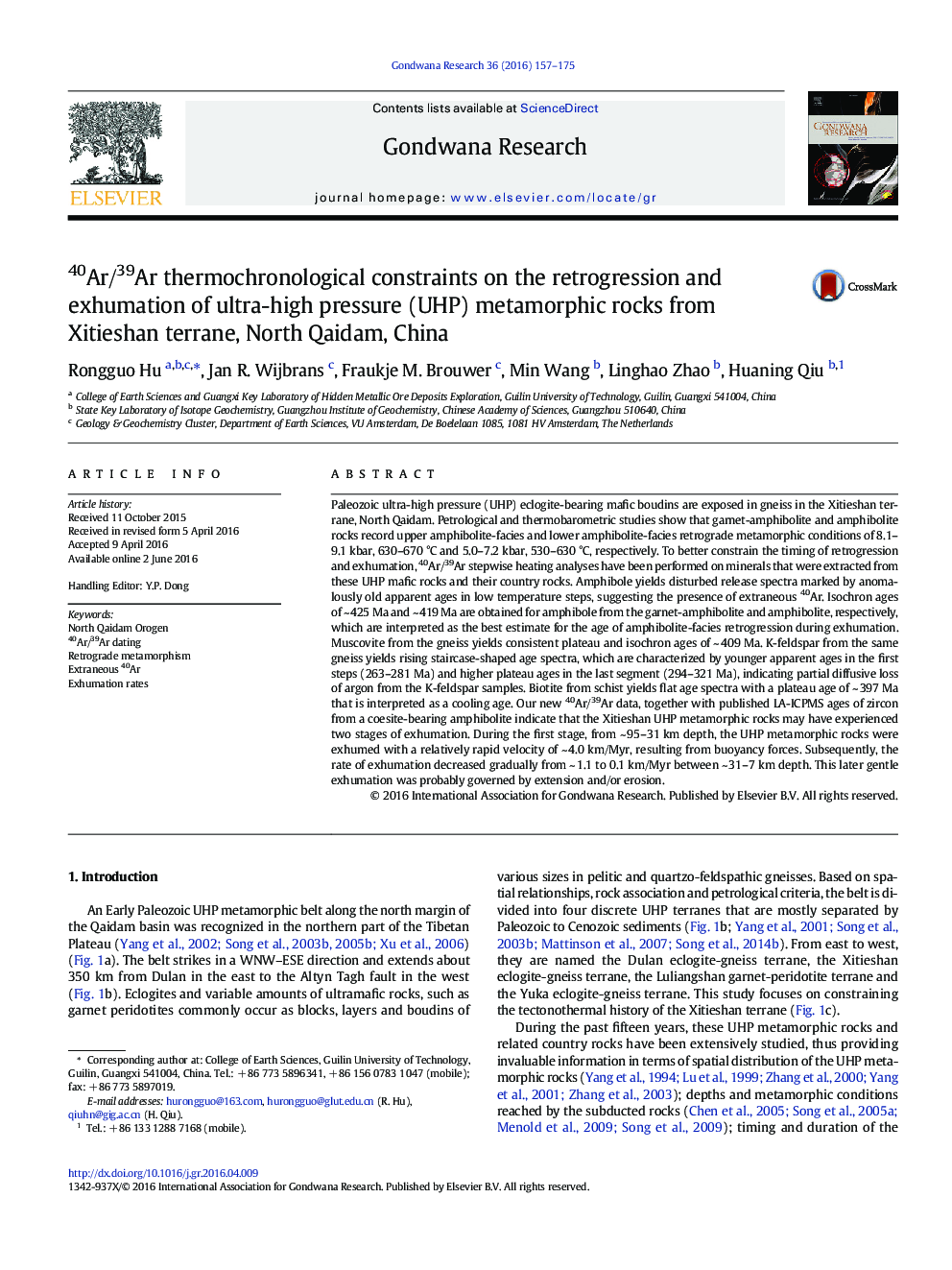| کد مقاله | کد نشریه | سال انتشار | مقاله انگلیسی | نسخه تمام متن |
|---|---|---|---|---|
| 4726625 | 1640135 | 2016 | 19 صفحه PDF | دانلود رایگان |

• We present new 40Ar/39Ar data to assess the retrogression history of Xitieshan eclogite, N. Qaidam.
• Amphibolite-facies metamorphism time of eclogite constrained as ~ 425 Ma.
• A pressure–temperature–time path was constructed based on our new 40Ar/39Ar data.
• The Xitieshan UHP rocks experienced an initial medium-speed exhumation of ~ 4.0 km/Myr.
Paleozoic ultra-high pressure (UHP) eclogite-bearing mafic boudins are exposed in gneiss in the Xitieshan terrane, North Qaidam. Petrological and thermobarometric studies show that garnet-amphibolite and amphibolite rocks record upper amphibolite-facies and lower amphibolite-facies retrograde metamorphic conditions of 8.1–9.1 kbar, 630–670 °C and 5.0–7.2 kbar, 530–630 °C, respectively. To better constrain the timing of retrogression and exhumation, 40Ar/39Ar stepwise heating analyses have been performed on minerals that were extracted from these UHP mafic rocks and their country rocks. Amphibole yields disturbed release spectra marked by anomalously old apparent ages in low temperature steps, suggesting the presence of extraneous 40Ar. Isochron ages of ~ 425 Ma and ~ 419 Ma are obtained for amphibole from the garnet-amphibolite and amphibolite, respectively, which are interpreted as the best estimate for the age of amphibolite-facies retrogression during exhumation. Muscovite from the gneiss yields consistent plateau and isochron ages of ~ 409 Ma. K-feldspar from the same gneiss yields rising staircase-shaped age spectra, which are characterized by younger apparent ages in the first steps (263–281 Ma) and higher plateau ages in the last segment (294–321 Ma), indicating partial diffusive loss of argon from the K-feldspar samples. Biotite from schist yields flat age spectra with a plateau age of ~ 397 Ma that is interpreted as a cooling age. Our new 40Ar/39Ar data, together with published LA-ICPMS ages of zircon from a coesite-bearing amphibolite indicate that the Xitieshan UHP metamorphic rocks may have experienced two stages of exhumation. During the first stage, from ~ 95–31 km depth, the UHP metamorphic rocks were exhumed with a relatively rapid velocity of ~ 4.0 km/Myr, resulting from buoyancy forces. Subsequently, the rate of exhumation decreased gradually from ~ 1.1 to 0.1 km/Myr between ~ 31–7 km depth. This later gentle exhumation was probably governed by extension and/or erosion.
Figure optionsDownload as PowerPoint slide
Journal: Gondwana Research - Volume 36, August 2016, Pages 157–175